Humanity Can Still Stop Climate Change by Implementing a New International Climate Agreement and Applying Radical New Technology
Abstract
1. Introduction
- 562,677 people killed–91% of all disasters (which include people who have been injured, lost their home or those who were in need of emergency medical assistance) have been caused by climate change, i.e., floods, droughts, extreme temperatures, storms and other weather extremes.
- 433 million people suffered from climate change (about 22 million people a year), as shown in Figure 2. In the 20-year period, there were 329 disasters annually, in contrast to the period of 1978–1997, during which there were 165 disasters annually, which means that the number of disasters doubled.
2. Methodology
- (I)
- damage due to climate change increases every year and the burden of that damage is not equally distributed among all countries (CO2 emissions differ significantly from one country to another, i.e., five countries contribute 60% of total CO2 emissions and all other countries in the world 40%);
- (II)
- criticism of global taxing policy proposed by economic experts;
- (III)
- the Paris Agreement should be revised;
- (IV)
- high-carbon economies must reorient themselves to total green economies using innovative technologies that can change the current trend of global temperature increase as a result of GHG (especially CO2) emissions.
2.1. A Model of Fair Distribution of Expenditures
2.2. View of the Economic Methods and Models Used in the IPCC Study
2.3. New International Climate Agreement
- Holding the increase in the global average temperature to well below 2 °C above pre-industrial levels and pursuing efforts to limit the temperature increase to 1.5 °C above pre-industrial levels, recognizing that this would significantly reduce the risks and impacts of climate change;
- Increasing the ability to adapt to the adverse impacts of climate change and foster climate resilience and low greenhouse gas emissions development, in a manner that does not threaten food production; and
- Making finance flows consistent with a pathway towards low greenhouse gas emissions and climate-resilient development.
Climate New Deal
- Are there enough natural resources to construct the requisite RES capacities, and are there enough resources to construct energy storage systems to obtain adequate energy from RES technology?
- Is RES technology efficient enough to build a sustainable global energy system at the rate required to prevent climate change?
- Is the price of RES technology acceptable, and can it be equally available to both developed and less developed countries?
- 1.
- Reorientation from a high-carbon economy to a green economy, implemented as follows:
- (a)
- 2% of GDP allocated by high income countries, with 1.5% of GDP for internal reorientation and 0.5% of GDP to aid lower-middle and low income countries;
- (b)
- 2% of GDP allocated by upper-middle income, lower-middle income and low income countries for internal reorientation;
- 2.
- Radically new technology as a new strong “weapon” against climate change that:
- (a)
- can simultaneously produce thermal and electric energy as well as drinking water throughout the year
- (b)
- has a large potential for further development;
- (c)
- is available to all countries;
- 3.
- The application of energy efficiency and RES technology, particularly in transport;
- 4.
- Time for realization: 30 years.
2.4. Seawater Steam Engine Technology—Technology to Combat Climate Change
2.4.1. State-of-the-Art Technology
- energy from RES as heat input;
- seawater (or river, lakes, etc.) as the working fluid which flows in an open thermodynamic cycle;
- the use of seawater (as a working fluid) under the following conditions: high temperature (300–350 °C), high pressure (80–120 bars) and salinity (0–120 g/kg) – the parameters that have never been simultaneously applied;
- future development of new materials that can withstand high temperatures and high pressure, as well as being resistant to seawater corrosion under the aforementioned conditions;
- unknown physical and chemical processes of seawater evaporation and separation of seawater steam in the boiling process (a separation process in high pressure separator) under the aforementioned conditions.
- Energy output (Electric energy + Heat) and simultaneous Drinking water output
2.4.2. Phase Transitions of Seawater in Seawater Steam Engine (SSE) Technology
2.4.3. High Pressure Separator—Separation Process
2.4.4. Theoretical Research into SSE Technology and New Empirical Formulas
2.4.5. “Core Technology”
2.4.6. SSE as Trigeneration Technology and Costs
2.4.7. Sustainable Community and Third Industrial Revolution
3. Results and Discussion
3.1. Potential of SSE Technology to Simultaneously Produe Thermal and Electric Energy and Drinking Water
| OLD CLIMATE CHANGE PARADIGMS | UNCONVINCINGNESS OF OLD AND ESTABLISHMENT OF NEW PARADIGMS | |
|---|---|---|
| 1 | Climate change will occur slowly. |
|
| 2 | The UN (UNFCCC) knows how to solve the problem. |
|
| 3 | The Paris Agreement is the solution to the climate change problem. |
|
| 4 | Constant economic growth is possible. |
|
| 5 | To solve the problem of climate change, it is enough to replace fossil fuels with RES. |
|
| 6 | All energy storage is good. |
|
| 7 | Energy systems should be connected, like the Internet (Smart Grids). |
|
| 8 | The only important thing is to build enough RES systems, regardless of their effect on the environment. |
|
| 9 | There are enough resources for RES technology |
|
3.2. The Dynamic of Climate New Deal Implementation
Evaluation of the Proposed Solutions
- There is a “significant gap” between the existing pledges and temperature goals established by the Paris Agreement, which implicitly acknowledges that it will not be possible to reach the goals of the Paris Agreement (also claimed by authors);
- Countries could not establish market rules for trading carbon credits (which was considered the most controversial issue at the conference, while we believe that this carbon tax policy, which is the basis of both the Kyoto Protocol and the Paris Agreement, is unconvincing and will not yield adequate results);
- Rich countries could not find a way to help poorer countries in order to mitigate the damages caused by climate change (therefore, no burden of sharing between countries was established);
- All 200 participating countries have been invited to respect the goals set by the Paris Agreement and to make progress in this direction next year, which is basically an empty UN appeal that binds no one and demonstrates the UN’s inability to resolve the climate change problem.
4. Conclusions
- (i)
- although there are a growing number of countries that have committed to achieving net-zero emissions goals by around the mid-century, the reduction of the global greenhouse gas (GHG) emissions will only be achieved if countries implement their own climate mitigation commitments (bottom-up approach);
- (ii)
- reductions of emissions which are consistent with the Paris Agreement temperature goal would only be possible if they are implemented globally (as stated in the latest UNEP report, 2020) [59];
- (iii)
Can Humanity Succeed?
Author Contributions
Funding
Conflicts of Interest
References
- Hunnes, J.A. More planet and less profit? The ethical dilemma of an oil producing nation. Cogent Bus. Manag. 2019, 6, 1648363. [Google Scholar] [CrossRef]
- Øyvind, I. Business and Climate Change: The Climate Response of the World’s 30 Largest Corporations. Environ. Commun. 2009, 3, 244–262. [Google Scholar] [CrossRef]
- Bach, M.S. Is the Oil and Gas Industry Serious About Climate Action? Environ. Sci. Policy Sustain. Dev. 2017, 59, 4–15. [Google Scholar] [CrossRef]
- Lomborg, B. False Alarm: How Climate Change Panic Costs Us Trillions, Hurts the Poor, and Fails to Fix the Planet; Basic Book: New York, NY, USA, 2020. [Google Scholar]
- Oreskes, N. The scientific consensus on climate change: How do we know we’re not wrong? In Climate Change, 2nd ed.; DiMento, J., Doughman, P., Eds.; MIT Press: Cambridge, MA, USA, 2014; pp. 65–99. [Google Scholar]
- Cook, J.; Oreskes, N.; Doran, P.T.; Anderegg, W.R.L.; Verheggen, B.; Maibach, E.W.; Carlton, J.S.; Lewandowsky, S.; Skuce, A.G.; Green, S.A. Consensus on consensus: A synthesis of consensus estimates on human-caused global warming. Environ. Res. Lett. 2016, 11, 1–7. [Google Scholar] [CrossRef]
- Global Climate Indicators 2018, World Meteorological Organization (WMO). Available online: https://gcos.wmo.int/en/global-climate-indicators (accessed on 21 November 2020).
- The State of the Global Climate in 2018, World Meteorlogical Organization (WMO). Available online: https://library.wmo.int/doc_num.php?explnum_id=5789 (accessed on 21 November 2020).
- Global Warming of 1.5 °C, Intergovernmental Panel on Climate Change (IPCC). 2018. Available online: https://www.ipcc.ch/site/assets/uploads/sites/2/2019/06/SR15_Full_Report_High_Res.pdf (accessed on 21 November 2020).
- Wallemacq, P.; House, R. Economic Losses, Poverty & Disasters (1998–2017). United Nations Office for Disaster Risk Reduction (UNISDR) and Centre for Research on the Epidemiology of Disasters (CRED). 2018. Available online: https://www.unisdr.org/files/61119_credeconomiclosses.pdf (accessed on 21 November 2020).
- United Nations Framework Convention on Climate Change, United Nation. 1992. Available online: https://unfccc.int/resource/docs/convkp/conveng.pdf (accessed on 21 November 2020).
- Glasgow Climate Change Conference. Available online: https://unfccc.int/process-and-meetings/conferences/glasgow-climate-change-conference (accessed on 21 November 2020).
- United Nations. Kyoto Protocol; United Nations: Tokyo, Japan, 1997; Available online: https://unfccc.int/kyoto-protocol-html-version (accessed on 21 November 2020).
- Rosen, A.M. The Wrong Solution at the Right Time: The Failure of the Kyoto Protocol on Climate Change. Polit. Policy 2015, 43, 30–58. [Google Scholar] [CrossRef]
- Grubb, M. Full legal compliance with the Kyoto Protocol’s first commitment period—Some lessons. Clim. Policy 2016, 16, 673–681. [Google Scholar] [CrossRef]
- Kim, Y.; Tanaka, K.; Matsuoka, S. Environmental and economic effectiveness of the Kyoto Protocol. PLoS ONE 2020, 15, e0236299. [Google Scholar] [CrossRef]
- United Nations. Paris Agreement; United Nations: Paris, France, 2015; Available online: https://unfccc.int/files/essential_background/convention/application/pdf/english_paris_agreement.pdf (accessed on 21 November 2020).
- Closing Statement by the Finnish Presidency and the European Commission on Behalf of the EU and Its Member States at COP25. Available online: https://ec.europa.eu/commission/presscorner/detail/en/statement_19_6779 (accessed on 21 November 2020).
- NASA Global Climate Change. Global Temperature; Global Land-Ocean Temperature Index. Available online: https://climate.nasa.gov/climate_resources/127/global-temperature/ (accessed on 21 November 2020).
- NASA Global Climate Change. Sea Level. Latest Measurement: July 2020. Available online: https://climate.nasa.gov/vital-signs/sea-level/ (accessed on 21 November 2020).
- Gao, Y.; Gao, X.; Zhang, X. The 2 °C Global Temperature Target and the Evolution of the Long-Term Goal of Addressing Climate Change—From the United Nations Framework Convention on Climate Change to the Paris Agreement. Engineering 2017, 3, 272–278. [Google Scholar] [CrossRef]
- Union of Concerned Scientists. Science for a Healthy Planet and Safer World, Share of Global Carbon Dioxide Emissions from Fuel Combustion (2015); IEA: Paris, France, 2018. [Google Scholar]
- Glasnovic, Z.; Margeta, J. Vision of Total Renewable Electricity Scenario. Renew. Sust. Energy Rev. 2011, 15, 1873–1884. [Google Scholar] [CrossRef]
- Stern, N. Stern Review on the Economics of Climate Change; Government of the United Kingdom: London, UK, 2006. Available online: http://mudancasclimaticas.cptec.inpe.br/~rmclima/pdfs/destaques/sternreview_report_complete.pdf (accessed on 21 November 2020).
- Nordhaus, W. Projections and Uncertainties about Climate Change in an Era of Minimal Climate Policies. Am. Econ. J. Econ. Policy 2018, 10, 333–360. [Google Scholar] [CrossRef]
- The Prize in Economic Sciences. Integrating Innovation and Climate with Economic Growth. Nordhaus, W.D., Romer, P.M., Eds.; 2018. Available online: https://www.nobelprize.org/prizes/economic-sciences/2018/press-release/ (accessed on 16 December 2020).
- The Royal Swedish Academy of Sciences. Economic Growth, Technological Change, and Climate Change; Scientific Background on the Sveriges Riksbank Prize in Economic Sciences in Memory of Alfred Nobel 2018; Nordhaus, W.D., Romer, P.M., Eds.; The Committee for the Prize in Economic Sciences in Memory of Alfred Nobel, 2018; Available online: https://www.nobelprize.org/prizes/economic-sciences/2018/summary/ (accessed on 16 December 2020).
- Murphy, P.R. Rolling the DICE William Nordhaus’s Dubious Case for a Carbon Tax. Indep. Rev. 2009, 14, 197–217. [Google Scholar]
- Murphy, P.R.; Michaels, P.J.; Knappenberger, P. The Case Against a U.S Carbon Tax. Cato Institute Policy Analysis No. 801; Washington, DC, USA, 17 October 2016; Available online: https://www.cato.org/sites/cato.org/files/pubs/pdf/pa801.pdf (accessed on 21 November 2020).
- Weitzman, M.L. Reactions to the Nordhaus Critique, Discussion Paper 2009-11; Harvard Environmental Economics Program: Cambridge, MA, USA, 2009; Available online: https://projects.iq.harvard.edu/files/heep/files/dp11_weitzman.pdf (accessed on 21 November 2020).
- World Resources Institute. Ranking the World’s Most Water-Stressed Countries in 2040. Available online: https://www.wri.org/blog/2015/08/ranking-world-s-most-water-stressed-countries-2040 (accessed on 21 November 2020).
- Hunt, A.J.; Farmer, T.J.; Clark, J.H. Elemental sustainability and the importance of scarce element recovery. In Elemental Recovery and Sustainability; Hunt, A.J., Ed.; Royal Society of Chemistry: Cambridge, UK, 2013; pp. 1–28. [Google Scholar]
- Nickless, E. Resourcing Future Generations: A Contribution by the Earth Science Community. Nat. Resour. Res. 2018, 27, 143–158. [Google Scholar] [CrossRef]
- Water and Climate Change. Available online: https://www.unwater.org/water-facts/climate-change/ (accessed on 21 November 2020).
- Henderson, R.M.; Clark, K.B. Architectural Innovation: The Reconfiguration of Existing Product Technologies and the Failure of Established Firms. Adm. Sci. Q. 1990, 35, 9–30. [Google Scholar] [CrossRef]
- Chandy, R.K.; Tellis, G.J. Organizing for Radical Product Innovation: The Overlooked Role of Willingness to Cannibalize. J. Mark. Res. 1998, 35, 474–487. [Google Scholar] [CrossRef]
- Ahuja, G.; Lampert, C.M. Entrepreneurship in the large corporation: A longitudinal study of how established firms create breakthrough inventions. Strateg. Manag. J. 2001, 22, 521–543. [Google Scholar] [CrossRef]
- WO2013072709-Solar Thermal Hydro Electric Power Plant for Simultaneously Energy and Drinking Water Production. Available online: https://patentscope.wipo.int/search/en/detail.jsf?docId=WO2013072709 (accessed on 21 November 2020).
- Glasnovic, Z.; Margeta, K.; Premec, K. Could Key Engine, as a new open-source for RES technology development, start the third industrial revolution? Renew. Sust. Energy Rev. 2016, 57, 1194–1209. [Google Scholar] [CrossRef]
- Margeta, K.; Glasnovic, Z. Seawater Steam Engine—The most powerful tecnology for building sustainable communities and stopping the climate change. In Proceedings of the II International Energy & Environmental Summit—2017, Dubai, UAE, 18–20 November 2017. [Google Scholar] [CrossRef]
- Glasnovic, Z.; Margeta, K. Seawater Steam Engine as a Prime Mover for Third Industrial Revolution; LAP LAMBERT Academic Publishing: Saarbuecken, Germany, 2017. [Google Scholar]
- Safarov, J.; Millero, F.; Feistel, R.; Heintz, A.; Hassel, E. Thermodynamic properties of standard seawater: Extensions to high temperatures and pressures. Ocean Sci. Discuss. 2009, 6, 689–722. [Google Scholar] [CrossRef]
- Sharqawy, M.H.; Lienhard, V.J.H.; Zubair, S.M. Thermophysical Properties of Seawater: A Review of Existing Correlations and Data. Desalin. Water Treat. 2010, 16, 354–380. [Google Scholar] [CrossRef]
- Nayar, K.G.; Sharqawy, M.H.; Banchik, L.D.; Lienhard, V.J.H. Thermophysical properties of seawater: A review and new correlations that include pressure dependence. Desalination 2016, 390, 1–24. [Google Scholar] [CrossRef]
- Šömen, M. Analysis of the Experimental System for Determining Separator Characteristics. Master’s Thesis, University of Ljubljana, Ljubljana, Slovenia, 2017. [Google Scholar]
- Glasnovic, Z.; Margeta, K.; Omerbegovic, V. Artificial water inflow created by solar energy for continuous green energy production. Water Resour. Manag. 2013, 27, 2303–2323. [Google Scholar] [CrossRef]
- Glasnovic, Z.; Rogosic, M.; Margeta, J. A model for optimal sizing of solar thermal hydroelectric power plant. Sol. Energy 2011, 85, 794–807. [Google Scholar] [CrossRef]
- European Parliament. Written Declaration 2007. 2007. Available online: https://www.europarl.europa.eu/sides/getDoc.do?pubRef=-//EP//NONSGML+WDECL+P6-DCL-2007-0044+0+DOC+PDF+V0//EN&language=EN (accessed on 16 December 2020).
- International Energy Agency. Key World Energy Statistics 2017. 31–35, rue de la Fédération 75739 Paris Cedex 15. 2017. Available online: http://svenskvindenergi.org/wp-content/uploads/2017/12/KeyWorld2017.pdf (accessed on 22 November 2020).
- Renewables 2018. Global Status Report. REN21 Secretariat, c/o UN Environment, 1 rue Miollis, Building VII, 75015 Paris, France. 2018. Available online: https://www.ren21.net/wp-content/uploads/2019/05/GSR2018_Full-Report_English.pdf (accessed on 22 November 2020).
- RenSMART Calculators. Wet-Wired.com Ltd.. 2020. Available online: https://www.rensmart.com/Calculators/KWH-to-CO2 (accessed on 19 June 2020).
- Global Carbon Project. Global Emissions from Fossil Fuel and Industry: 36.3 ± 1.8 GtCO2 in 2015. Available online: https://www.globalcarbonproject.org/carbonbudget/archive/2016/GCP_CarbonBudget_2016.pdf (accessed on 22 November 2020).
- Lenntech (European Head Office), Distributieweg 3, 2645 EG Delfgauw, The Netherland. Available online: https://www.lenntech.com/specific-questions-water-quantities.htm#ixzz5fMJfVtds (accessed on 22 November 2020).
- Renewables 2017. Global Status Report. REN21 Secretariat. Available online: https://www.ren21.net/gsr-2017/ (accessed on 22 November 2020).
- NASA. Global Climate Changes; Evidence. Available online: https://climate.nasa.gov/evidence/ (accessed on 19 June 2020).
- Daily CO2. Available online: https://www.co2.earth/daily-co2 (accessed on 22 November 2020).
- UN Climate Change Conference—COP25. 2019. Available online: https://unfccc.int/cop25 (accessed on 22 November 2020).
- Jowit, J.; Wintour, P. Cost of Tackling Global Climate Change Has Doubled, Warns Stern; The Guardian: London, UK, 2008. [Google Scholar]
- United Nations Environment Programme (UNEP) and UNEP DTU Partnership (UDP), Emissions Gap Report 2020. Available online: https://www.unep.org/emissions-gap-report-2020 (accessed on 22 November 2020).
- Rosenbloom, D.; Markard, J.; Geels, F.W.; Fuenfschilling, L. Why carbon pricing is not sufficient to mitigate climate change—And how “sustainability transition policy” can help. Proc. Natl. Acad. Sci. USA 2020, 117, 8664–8668. [Google Scholar] [CrossRef]
- Solar Desalination, Department of Energy, USA. Available online: https://www.energy.gov/eere/solar/solar-desalination (accessed on 22 November 2020).
- Le Quéré, C.; Jackson, R.B.; Jones, M.W.; Smith, A.P.J.; Abernethy, S.; Andrew, R.M.; De-Gol, A.J.; Willis, D.R.; Shan, Y.; Canadell, J.G.; et al. Temporary reduction in daily global CO2 emissions during the COVID-19 forced confinement. Nat. Clim. Chang. 2020, 10, 647–653. [Google Scholar] [CrossRef]
- The UN Global Assessment Report on Disaster Risk Reduction (GAR); United Nations Office for Disaster Risk Reduction (UNDRR): Geneva, Switzerland, 2019.
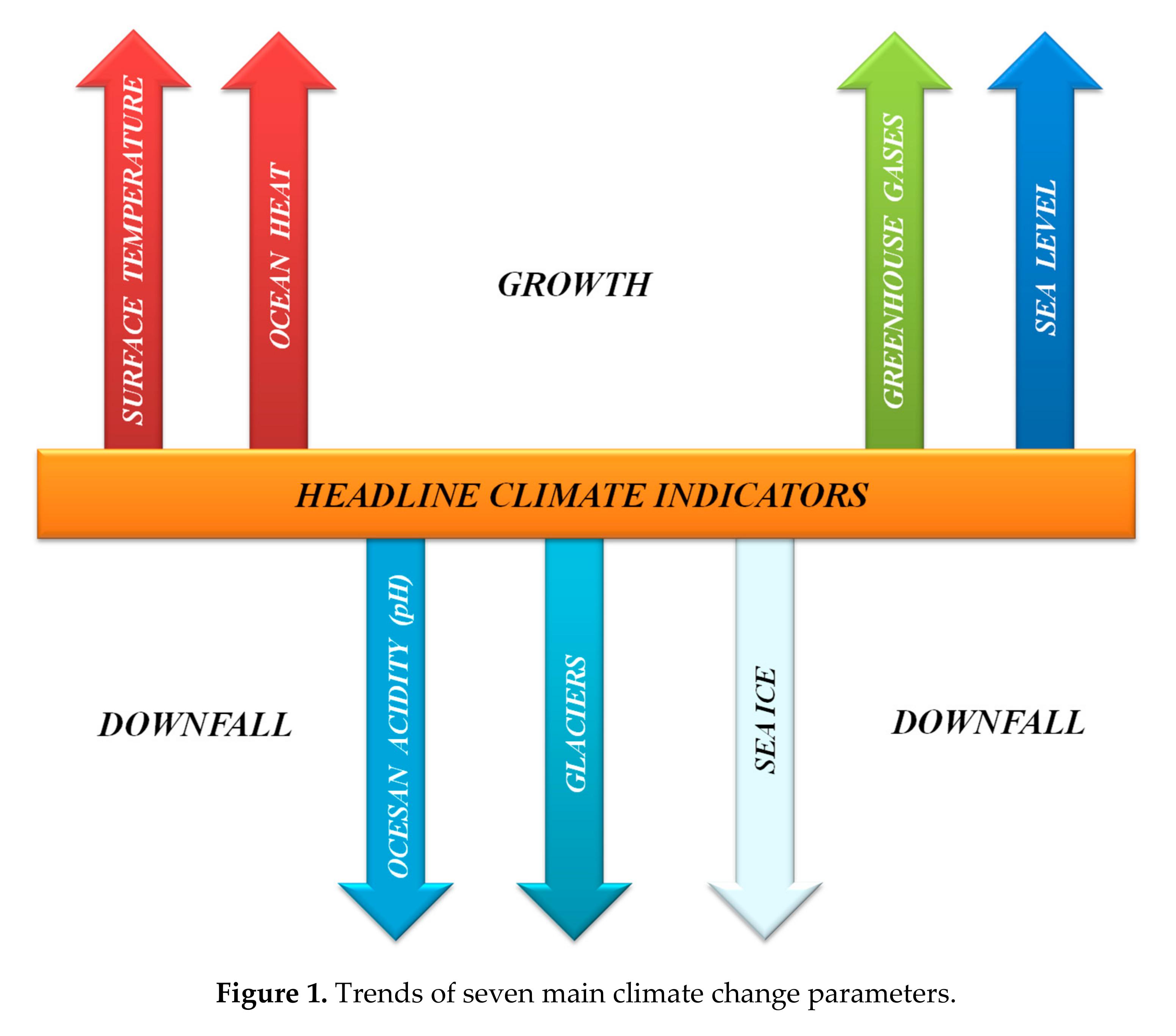
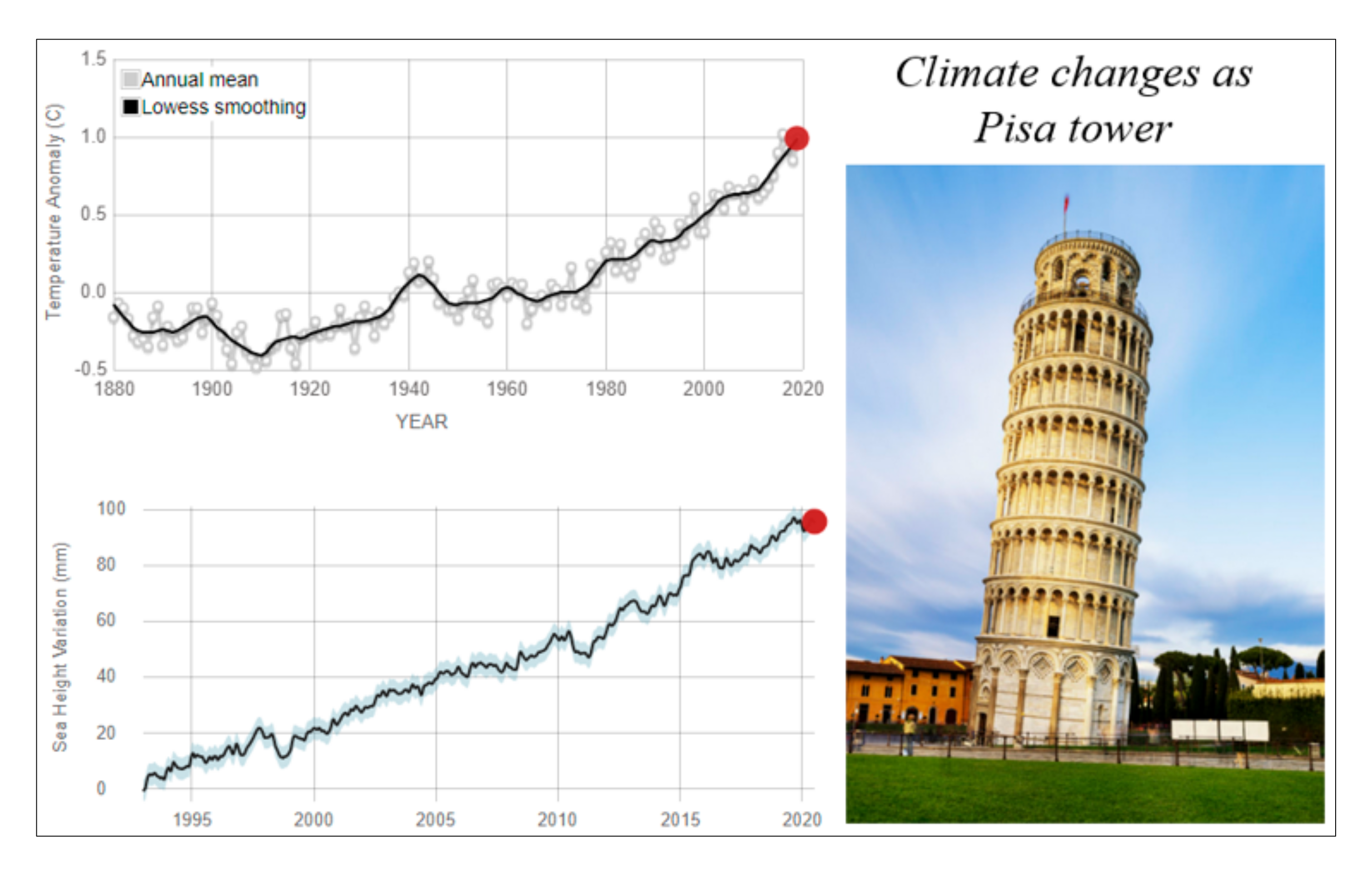
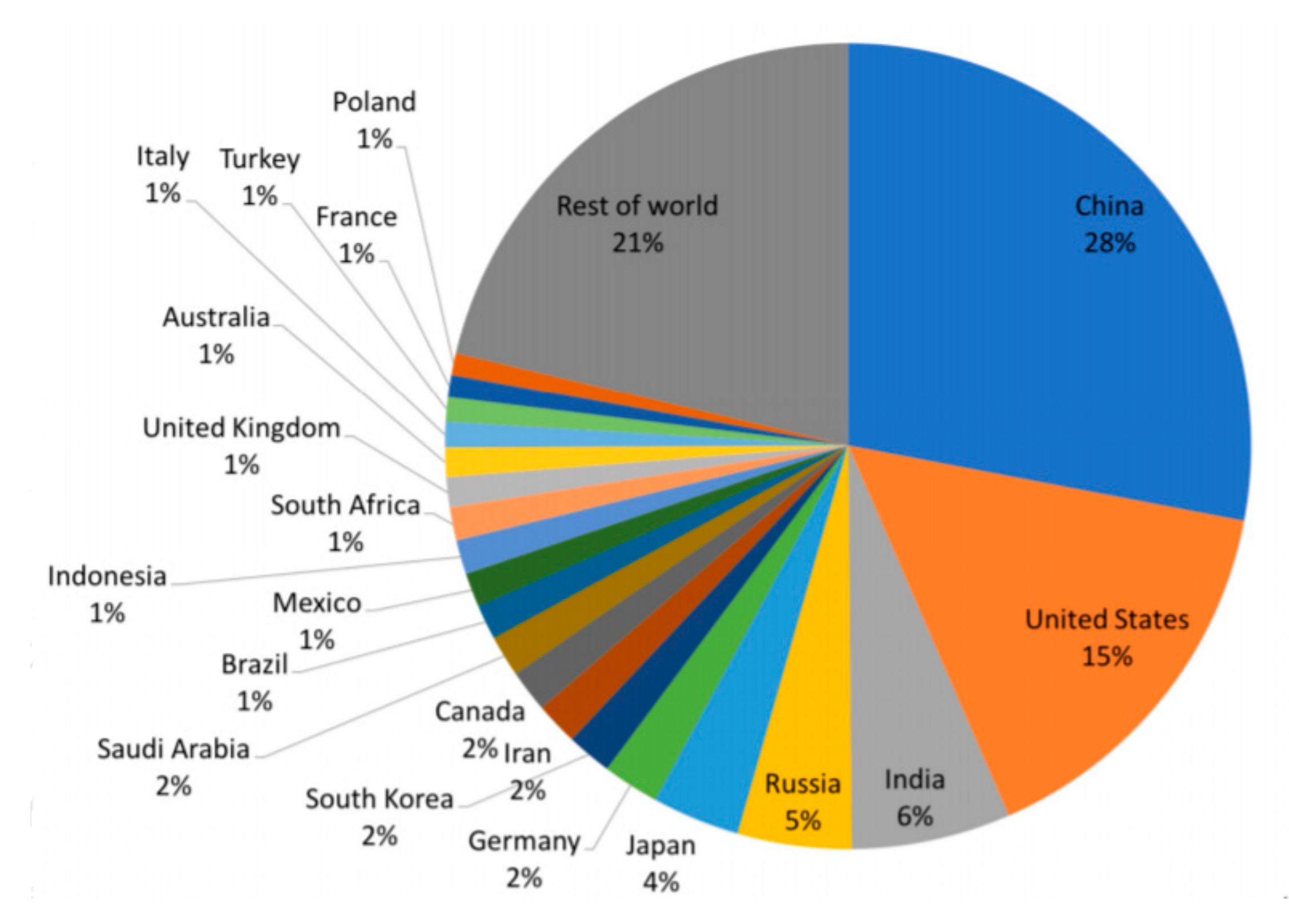
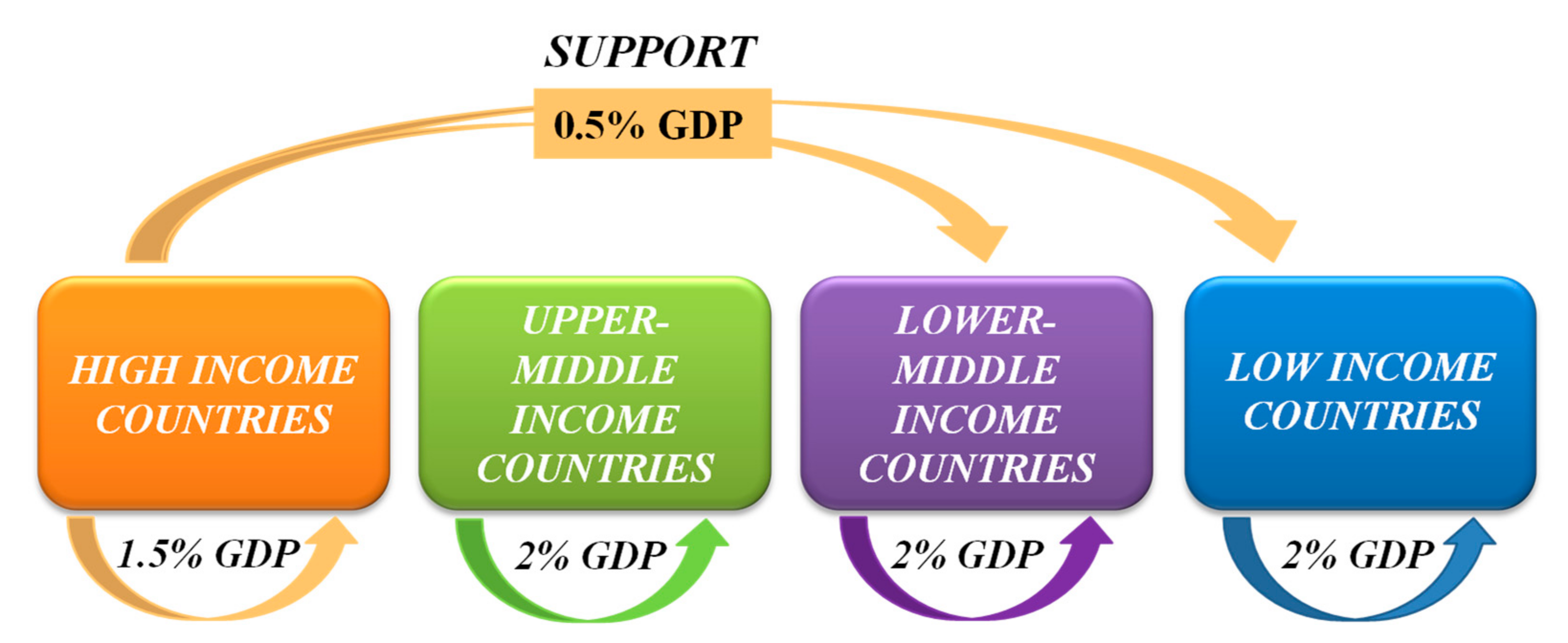

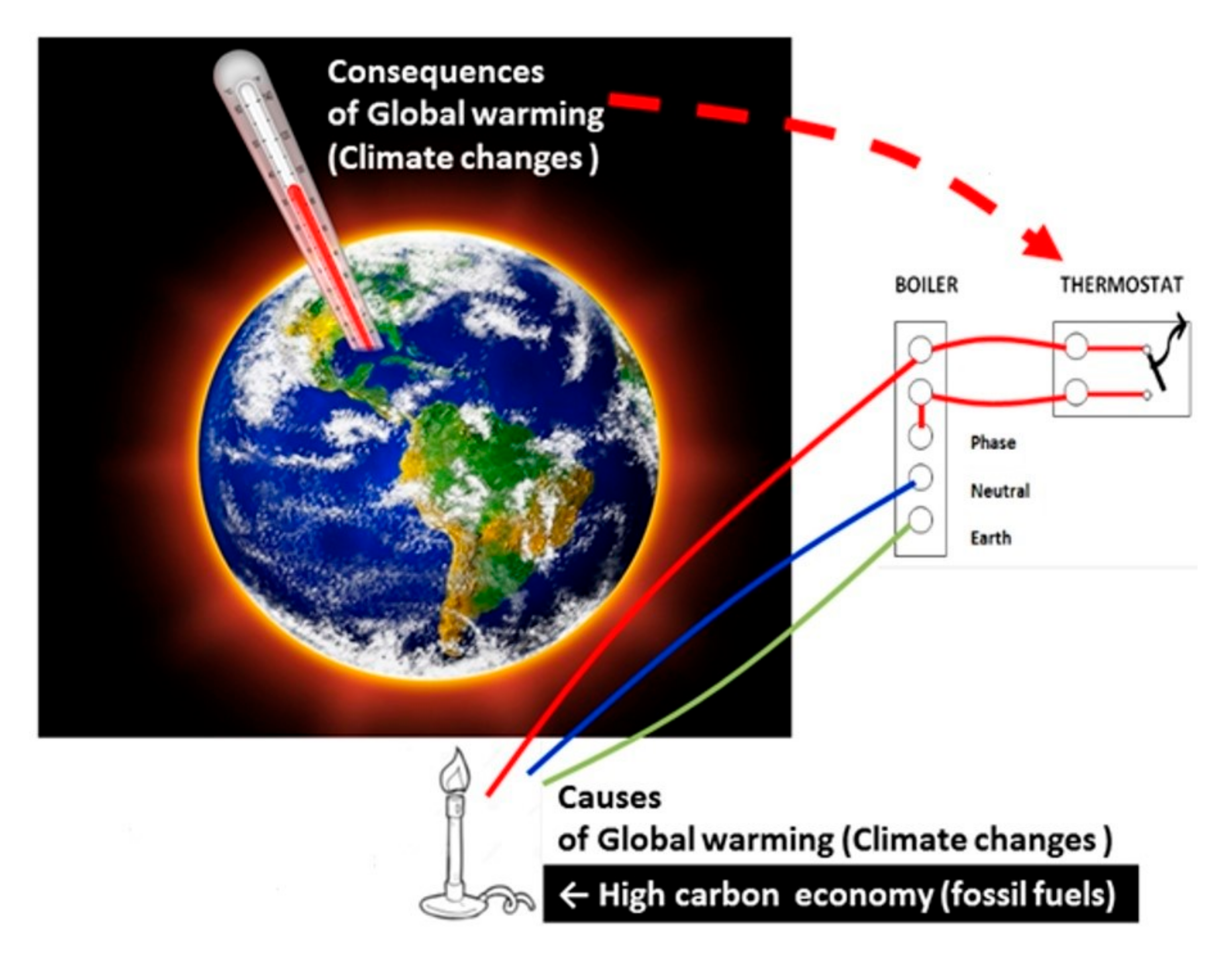
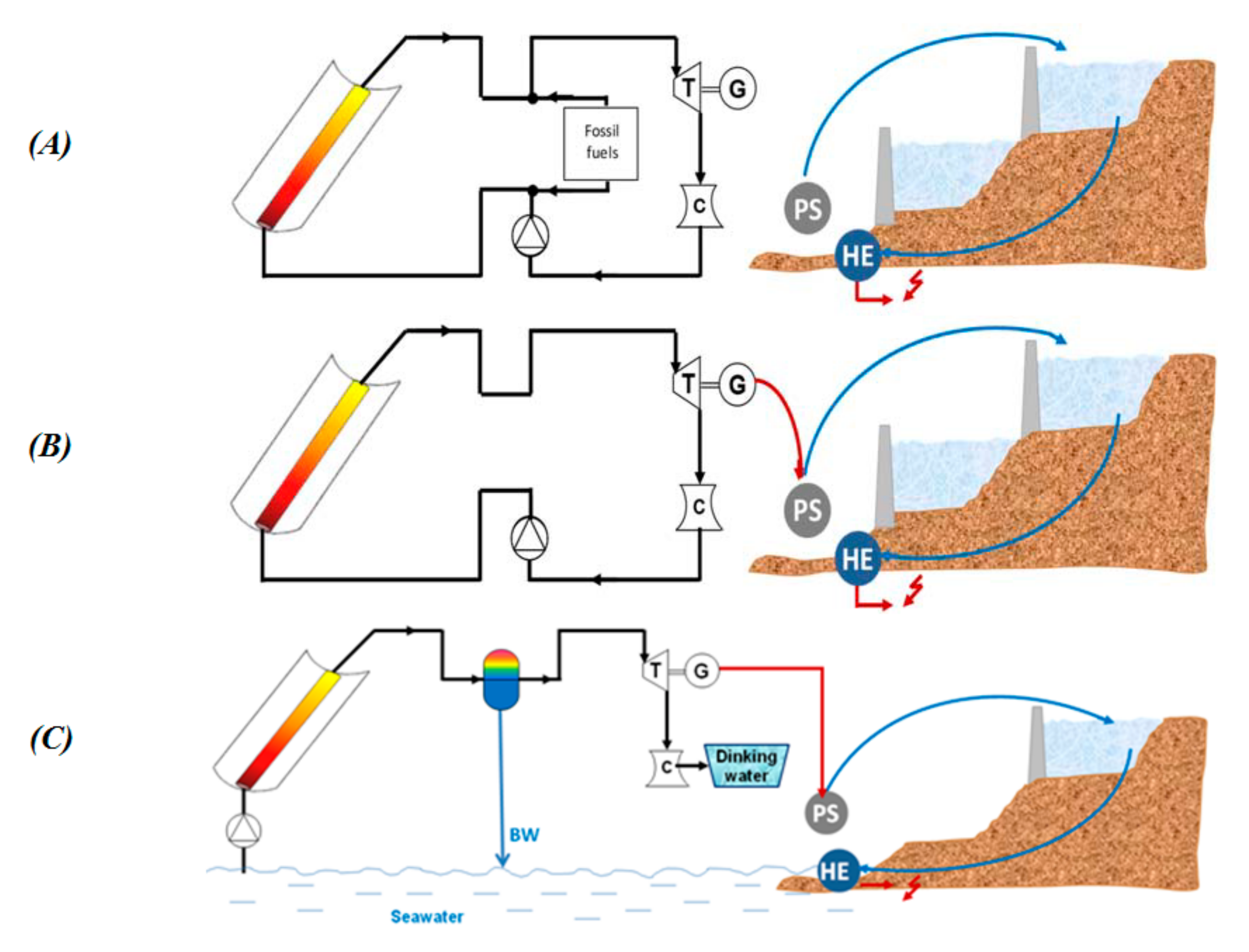
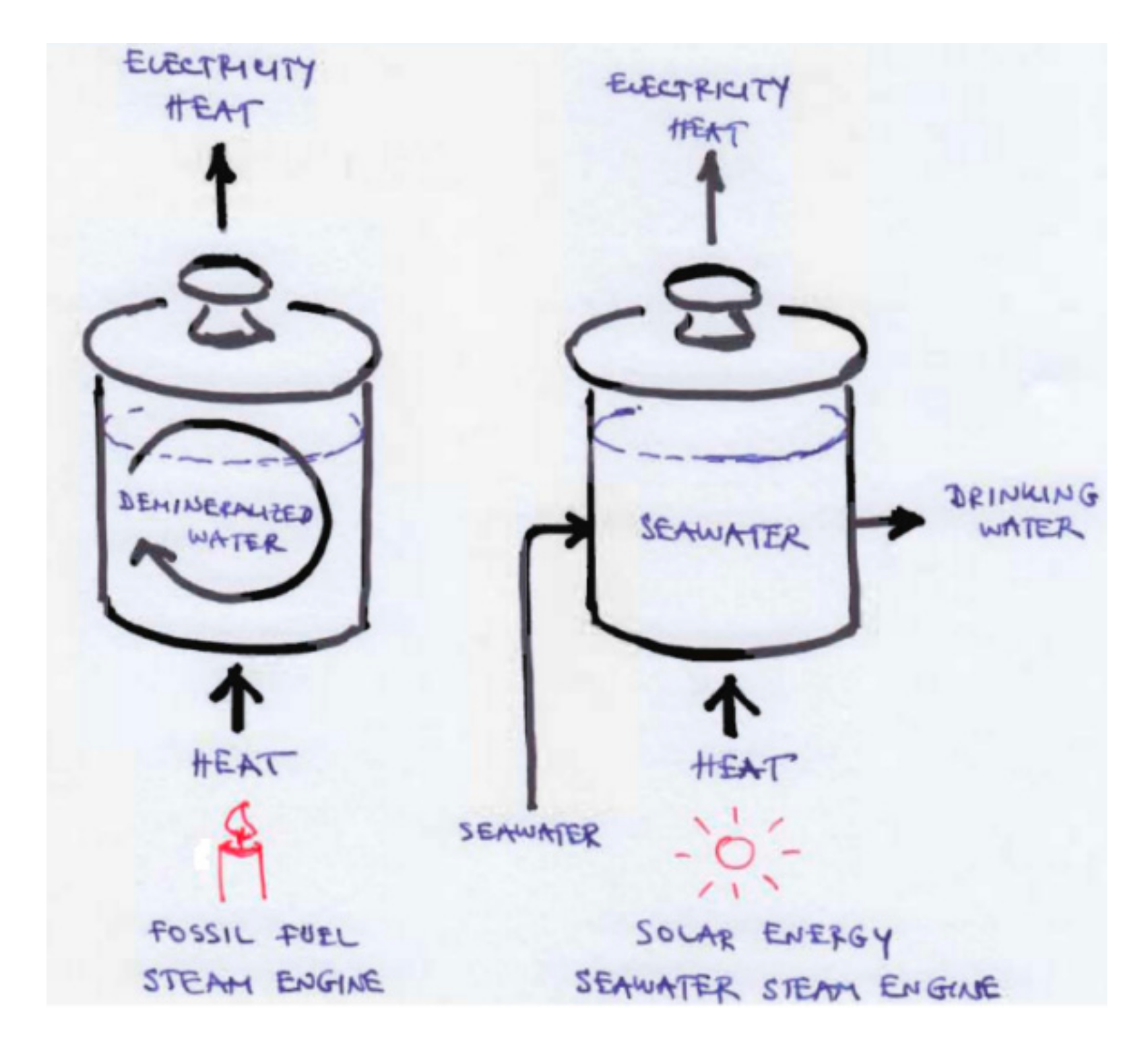


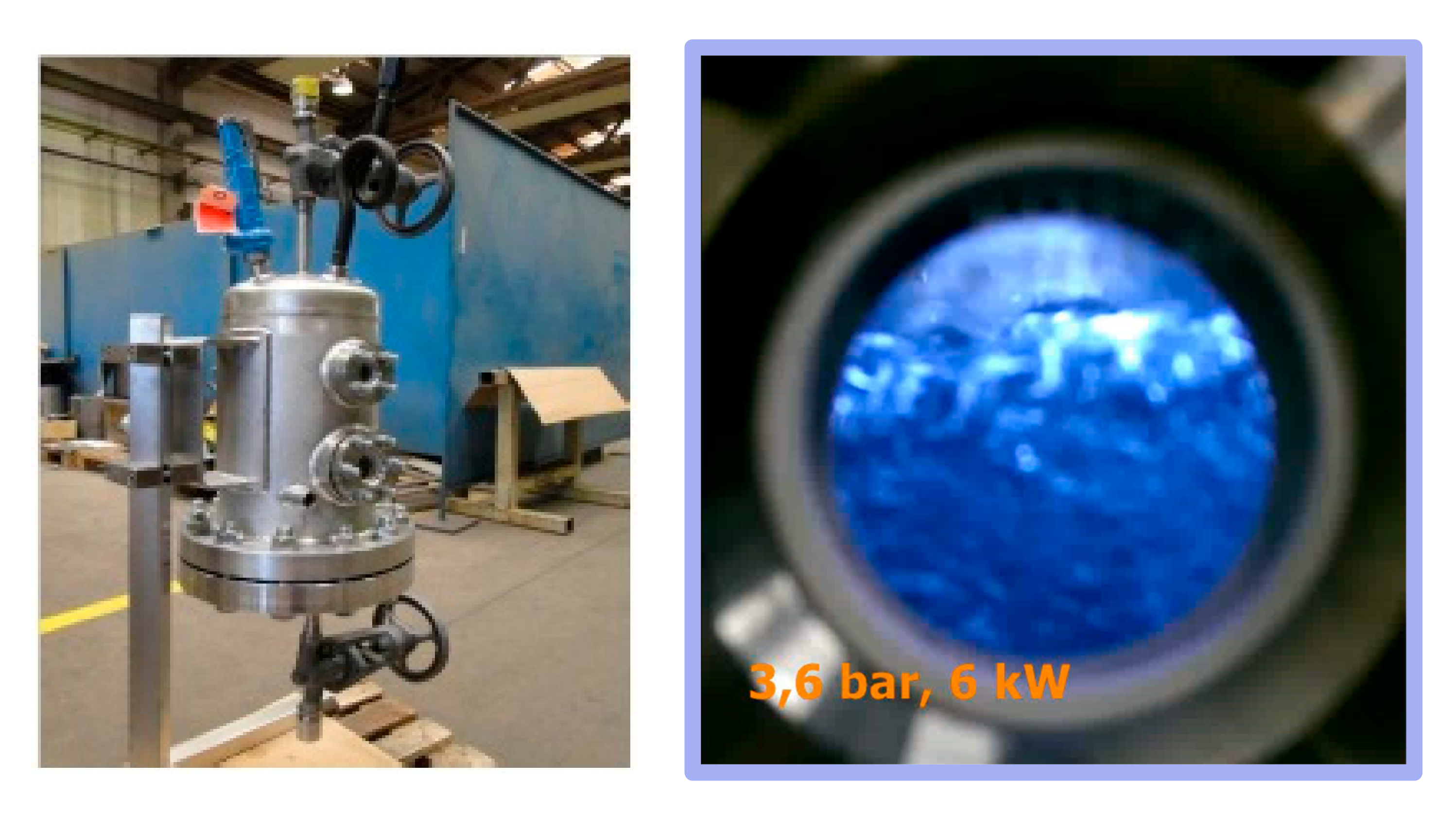

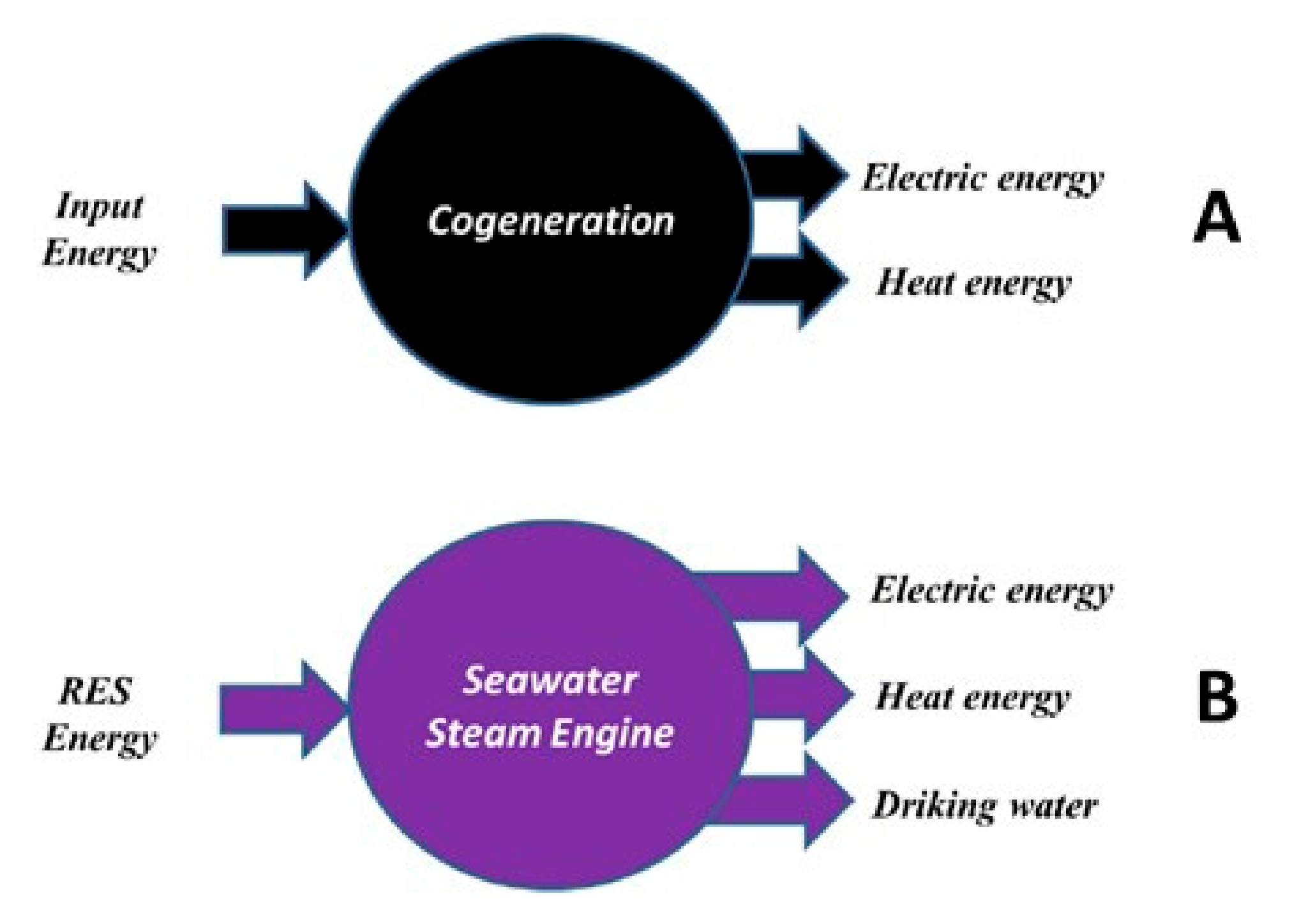
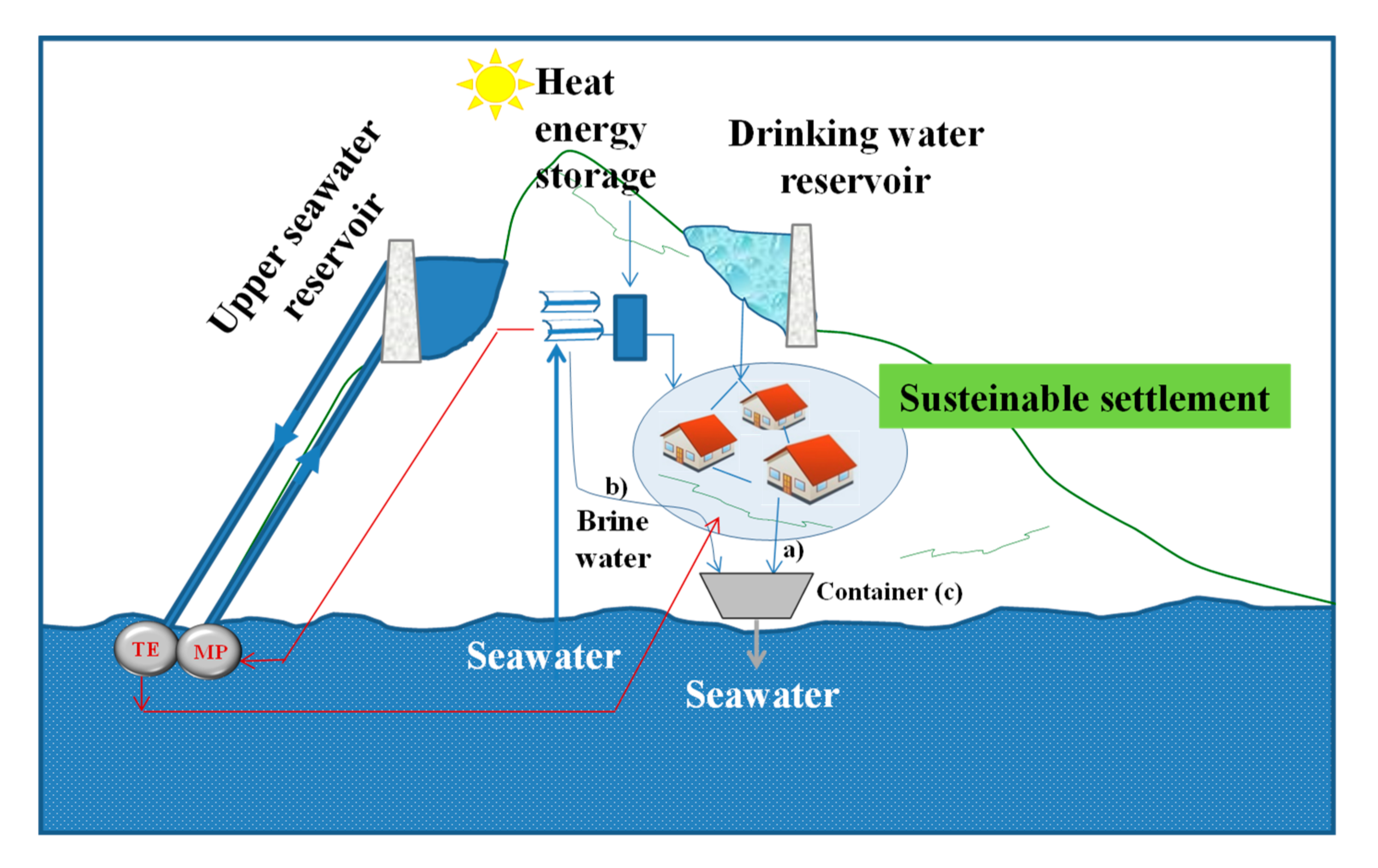
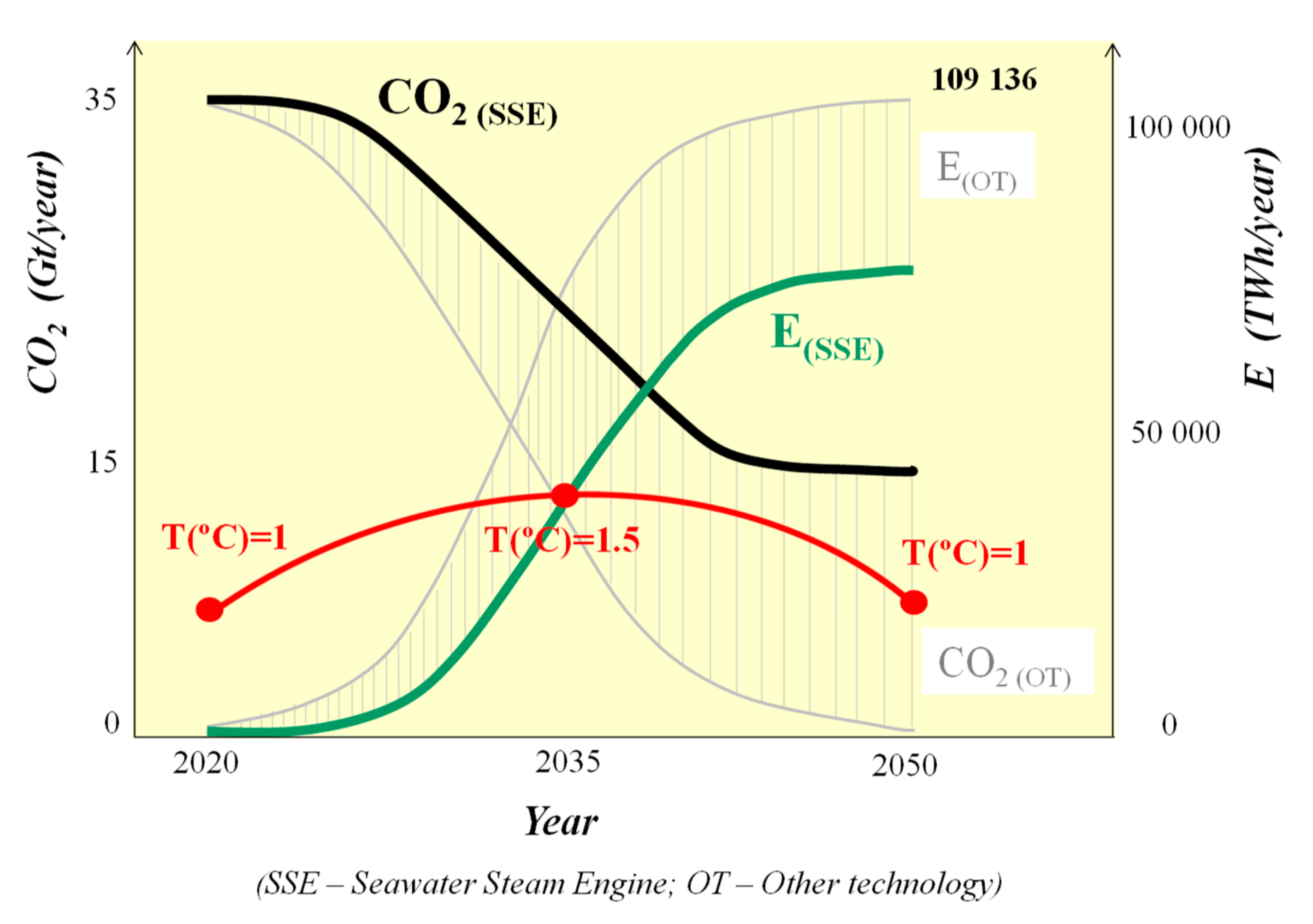
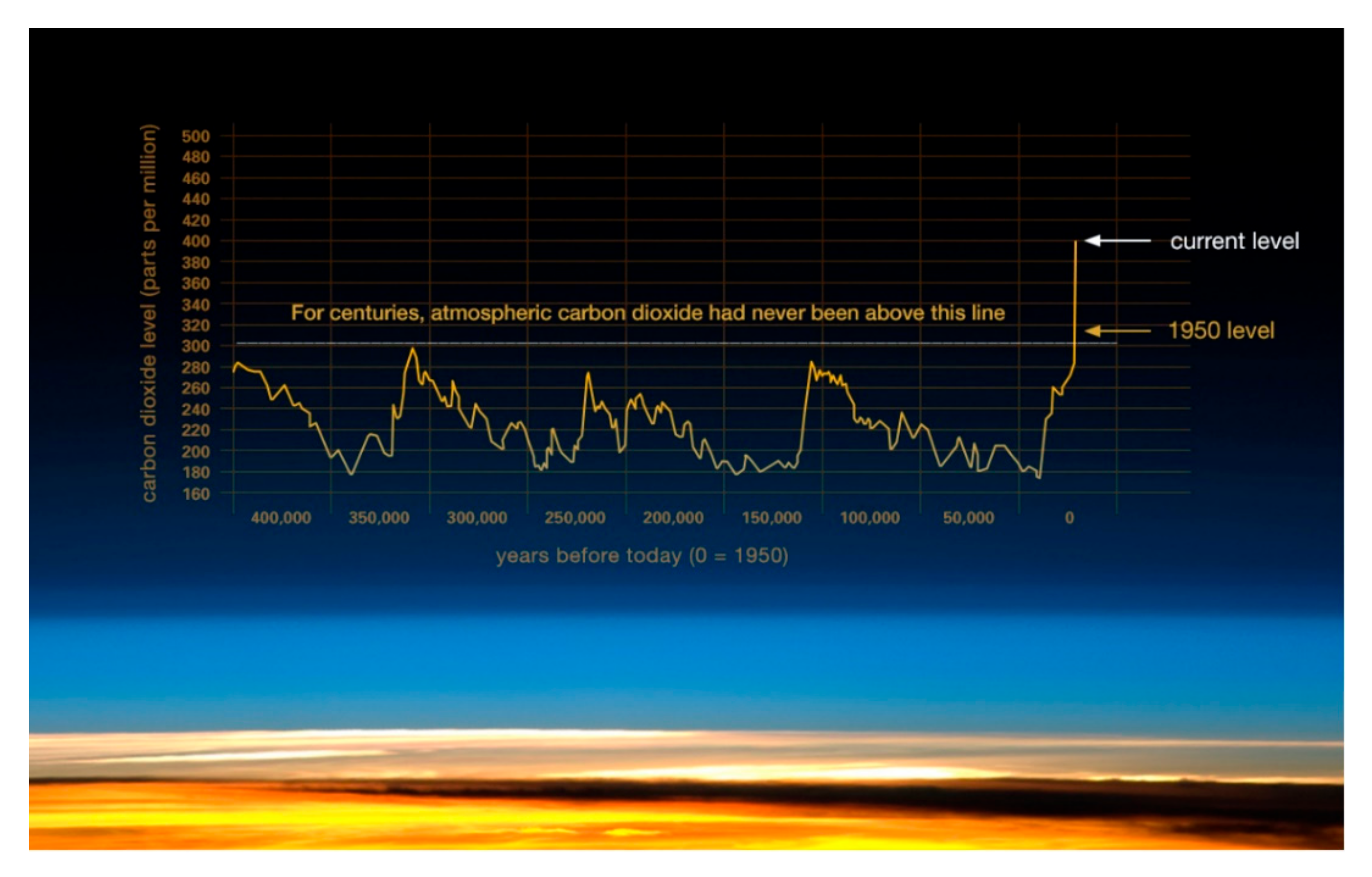
| Climate Changes Characteristics/Countries | High Income | Upper-Middle Income | Lower-Middle Income | Low Income | |
|---|---|---|---|---|---|
| 1 | Total GDP (billion US$) | 349,268 | 94,500 | 17,018 | 1186 |
| 2 | Total Losses—Absolute value (billion US$) | 1432 | 567 | 194 | 21 |
| 3 | Losses (% GDP) | 0.41 | 0.6 | 1.14 | 1.77 |
| 4 | Significant contributions to CO2 emissions in 2015 (Share in %) | USA (15%), Japan (4%) | China (28%), Russia (5%) | India (6%) | - |
| 5 | 2% of GDP | 6985 | 1890 | 340 | 24 |
| 6 | 1.5% GDP (High income) | 5239 | |||
| 7 | Distribution of 0.5% GDP from High income countries – Absolute value (billion US$) | 1746 | = | 1631 + | 115 |
| SSE-PSH | 1 | 2 | 3 | 4 | 5 | 6 | 7 | 8 | 9 | 10 | |
|---|---|---|---|---|---|---|---|---|---|---|---|
| I | 20% ELECTRICITY | 21,827 | 16 | 16 | 1.9 (RES) | 20,736 | 2401 | 2095 | 21,827 | 6 | 21 |
| II | 48% HEAT | 52,385 | 6.0 (CSP) | 65,482 | 62,363 | 15 | |||||
| III | DRINKING WATER | 168 | 218 | ||||||||
Publisher’s Note: MDPI stays neutral with regard to jurisdictional claims in published maps and institutional affiliations. |
© 2020 by the authors. Licensee MDPI, Basel, Switzerland. This article is an open access article distributed under the terms and conditions of the Creative Commons Attribution (CC BY) license (http://creativecommons.org/licenses/by/4.0/).
Share and Cite
Glasnovic, Z.; Margeta, K.; Logar, N.Z. Humanity Can Still Stop Climate Change by Implementing a New International Climate Agreement and Applying Radical New Technology. Energies 2020, 13, 6703. https://doi.org/10.3390/en13246703
Glasnovic Z, Margeta K, Logar NZ. Humanity Can Still Stop Climate Change by Implementing a New International Climate Agreement and Applying Radical New Technology. Energies. 2020; 13(24):6703. https://doi.org/10.3390/en13246703
Chicago/Turabian StyleGlasnovic, Zvonimir, Karmen Margeta, and Nataša Zabukovec Logar. 2020. "Humanity Can Still Stop Climate Change by Implementing a New International Climate Agreement and Applying Radical New Technology" Energies 13, no. 24: 6703. https://doi.org/10.3390/en13246703
APA StyleGlasnovic, Z., Margeta, K., & Logar, N. Z. (2020). Humanity Can Still Stop Climate Change by Implementing a New International Climate Agreement and Applying Radical New Technology. Energies, 13(24), 6703. https://doi.org/10.3390/en13246703





